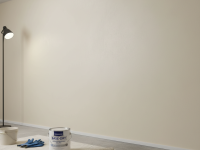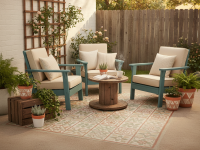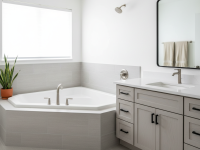Ever walked into a room and felt like the ceiling was just… pressing down on you? You know that feeling, right? That subtle sense of being enclosed, even a little claustrophobic, just because the ceiling feels a tad too close for comfort. Low ceilings can be a real design challenge, making spaces feel smaller, darker, and less inviting than they truly are. But here’s a little secret from someone who’s spent years observing and experimenting with interior spaces: you don’t need a sledgehammer to raise your ceiling! With some clever design tricks and a good understanding of visual perception, you can create a remarkable illusion of height.
Trust me, I’ve seen these strategies work wonders. It’s all about tricking the eye, drawing it upwards, and making the boundaries of the room feel more expansive. So, if you’re battling with a low-ceiling dilemma, grab a cup of coffee and let’s dive into some practical, stylish, and genuinely effective ceiling design ideas that will make your rooms breathe a sigh of relief.
The Psychology of Space: Why Low Ceilings Feel Small
Before we jump into solutions, let’s quickly understand why low ceilings have such an impact. Our perception of a room’s size isn’t just about its footprint; it’s also heavily influenced by its vertical dimension. A low ceiling can make a room feel cramped, less airy, and even a bit gloomy because it limits the amount of light reflection and restricts our visual pathways. It can make everything feel heavier. Our goal is to counteract this feeling by creating visual cues that lead the eye upwards, thereby stretching the perceived height of the room. Think of it as a magic show for your walls and ceiling!
Paint Your Way to Perceived Height: The Color & Finish Game
One of the easiest and most impactful changes you can make involves a paintbrush. Color is a powerful tool in interior design, and when it comes to low ceilings, it’s your best friend.
Go Lighter, Always
Dark colors tend to absorb light and make surfaces recede, which is the last thing you want for a low ceiling. Instead, opt for very light colors – think crisp whites, off-whites, pale grays, or very soft pastels. A ceiling painted a few shades lighter than your walls will visually ‘lift’ it, making it appear further away. Even better, painting the ceiling the exact same light color as your walls can blur the boundary between the two, making it harder for the eye to pinpoint where the wall ends and the ceiling begins, thus creating a seamless, expansive feel.
The Magic of Gloss
This is a trick many people overlook! Consider using a high-gloss or semi-gloss paint finish on your ceiling. The reflective quality of glossy paint acts like a subtle mirror, bouncing light around the room and reflecting a portion of the floor and walls. This adds a sense of depth and opeess, effectively making the ceiling feel higher. It’s a bit bolder than a matte finish, but the effect can be truly stuing and modern.
Embrace the Vertical: Drawing the Eye Upwards
Our eyes naturally follow lines. By incorporating vertical elements into your room’s design, you can cleverly guide the gaze upwards, making the room seem taller.
Floor-to-Ceiling Curtains
This is a classic for a reason! Instead of hanging your curtains just above the window frame, mount the curtain rod as close to the ceiling as possible. Allow the curtains to just kiss the floor. This creates a long, unbroken vertical line that draws the eye all the way up, instantly adding perceived height. Choose light, airy fabrics for an even more open feel.
Vertical Wall Treatments
Think beyond just paint. Vertical stripes on an accent wall can work wonders. If stripes feel too bold for you, consider vertical shiplap, beadboard, or even wallpaper with a subtle vertical pattern. Tall, narrow artwork or a gallery wall arranged vertically can also contribute to this upward visual journey.
Tall, Lean Furniture & Accessories
Opt for bookcases or shelving units that are tall and narrow rather than wide and squat. Even a tall, elegant floor lamp or a slender plant can help to emphasize verticality and pull the eye up towards the ceiling.
Light It Up, Smartly: Beyond Just Illumination
Lighting is crucial for any room, but for low ceilings, it’s a game-changer. The right lighting can make a huge difference in how expansive a space feels.
Recessed Lighting is Your Best Friend
Say goodbye to bulky pendant lights or chandeliers that hang down and visually shorten the room. Recessed lighting (or “pot lights”) are flush with the ceiling, providing excellent illumination without encroaching on your precious vertical space. They keep the ceiling plane clean and uninterrupted, which is key for creating an illusion of height.
Embrace Uplighting
Floor lamps that direct light upwards onto the ceiling can work wonders. This technique washes the ceiling with light, making it appear brighter and more open. Cove lighting, where LED strips are hidden in a cornice or shelf near the ceiling, is another fantastic way to achieve a gentle, upward glow that expands the room visually.
Maximize Natural Light
Never underestimate the power of natural light. Keep windows uncovered or use light, sheer window treatments that allow maximum light penetration. Bright, well-lit rooms always feel more spacious than dim ones. If possible, strategically placed mirrors can help bounce this natural light deeper into the room.
Strategic Reflections: The Power of Mirrors
Mirrors are not just for checking your outfit; they are master illusionists in interior design.
Large, Strategically Placed Mirrors
A large mirror leaned against a wall or hung high can instantly double the perceived size of a room and reflect light, making the space feel brighter and more open. Position it to reflect an interesting view, or even another wall to create the illusion of an extended space. The higher the mirror reaches, the more it contributes to the vertical illusion.
Mirrored Furniture or Accents
Smaller mirrored elements, like a mirrored coffee table, side table, or even picture frames with a mirrored finish, can subtly add to the reflective qualities of the room, contributing to a lighter, more expansive feel without being overwhelming.
Furniture & Flow: How Your Layout Plays a Role
Believe it or not, the furniture you choose and how you arrange it can significantly impact the perceived ceiling height.
Low-Profile Furniture
Opt for furniture pieces that are closer to the ground. A low-slung sofa, a platform bed, or a coffee table with short legs will create more visual space between the furniture and the ceiling, making the ceiling seem higher by comparison. It’s all about creating a sense of proportion.
Keep the Center Clear
An open central area in a room immediately makes it feel larger and less cluttered. Avoid placing tall, bulky items directly in the middle of the room. Arrange furniture around the perimeter to maintain an open flow, which enhances the overall feeling of spaciousness.
Less is More: Decluttering for an Open Feel
Finally, and perhaps most importantly, a cluttered room will always feel smaller and more cramped, regardless of ceiling height. Think minimalist, think airy.
Streamline Your Decor
Too many decorative items, especially those that are tall or visually heavy, can weigh down a room. Be selective with your decor. Focus on a few well-chosen pieces rather than many small ones. Keep surfaces clear and organized.
Built-ins Can Be Your Friend
If you need storage, built-in shelving or cabinets can be a great option because they integrate seamlessly with the walls, reducing visual clutter compared to freestanding units. Painting them the same color as your walls can make them almost disappear.
Conclusion
Dealing with low ceilings doesn’t have to be a headache. It’s an opportunity to get creative and truly understand how design principles can transform a space. By strategically using light colors, reflective surfaces, vertical lines, and smart lighting, you can effortlessly trick the eye into perceiving a much grander, more open, and airier room. It’s amazing what a difference these simple yet effective techniques can make. So, don’t let those low ceilings get you down; embrace these ideas, experiment with what works best for your space, and get ready to enjoy a room that feels beautifully expanded and wonderfully inviting!




